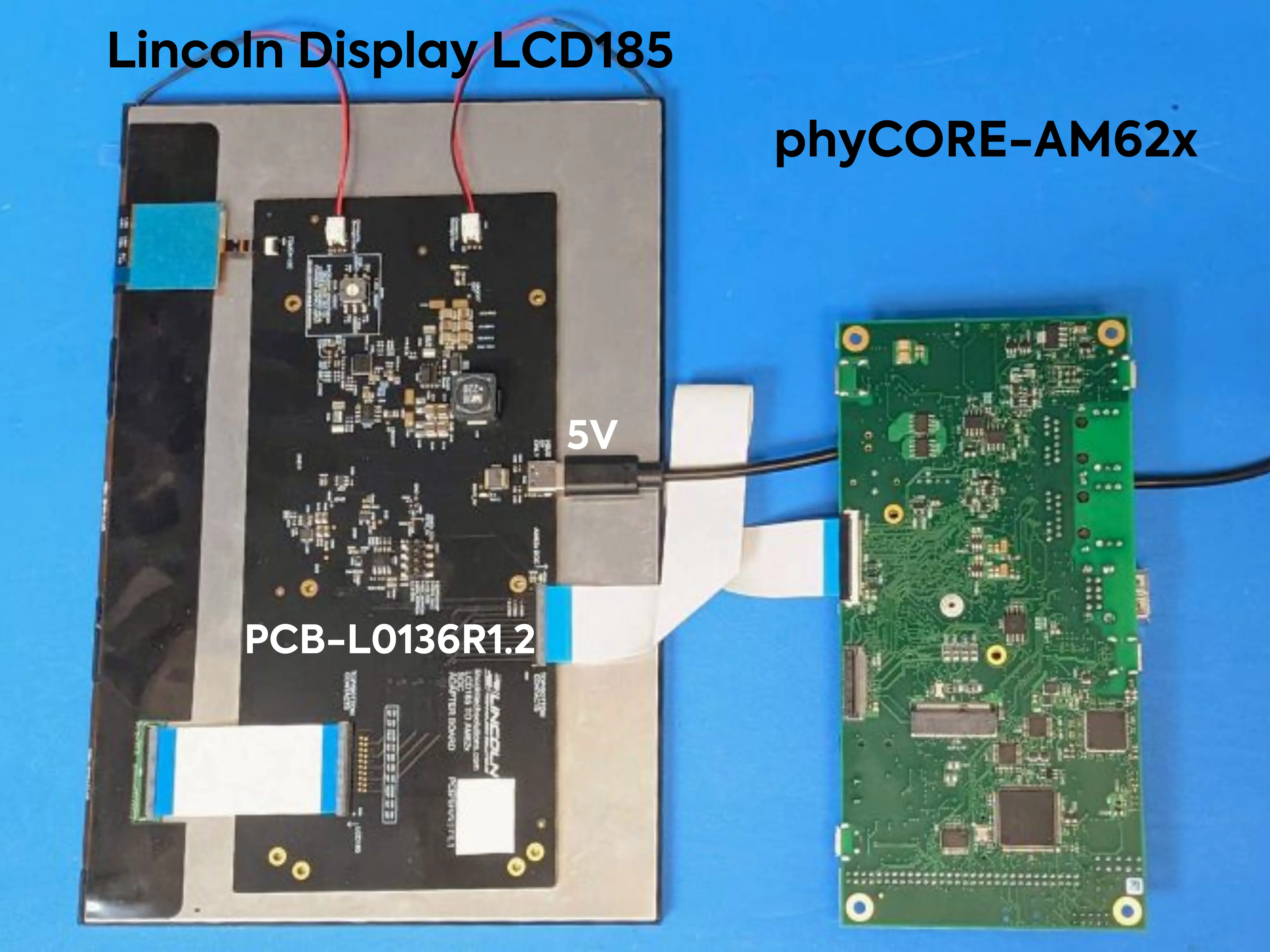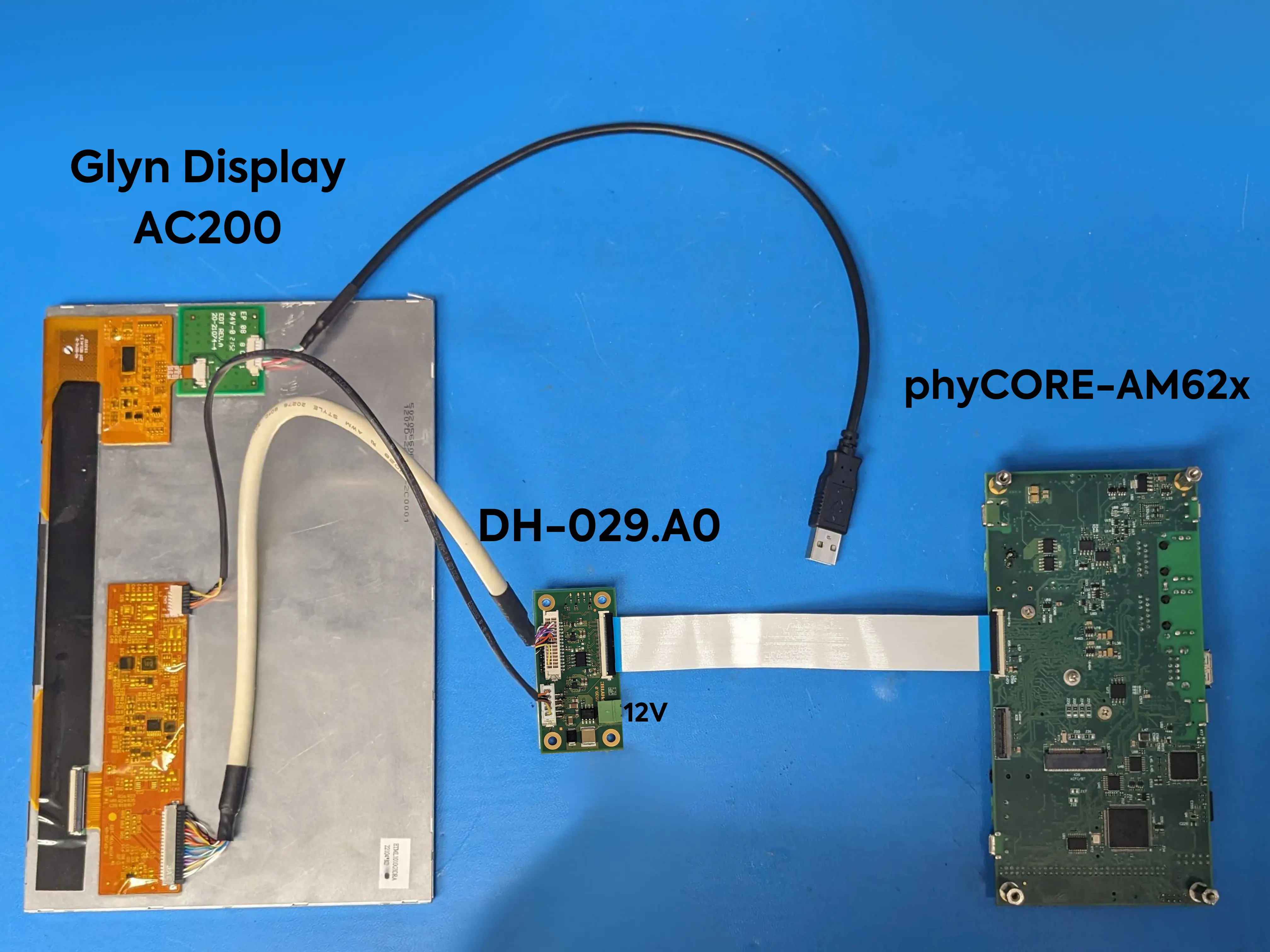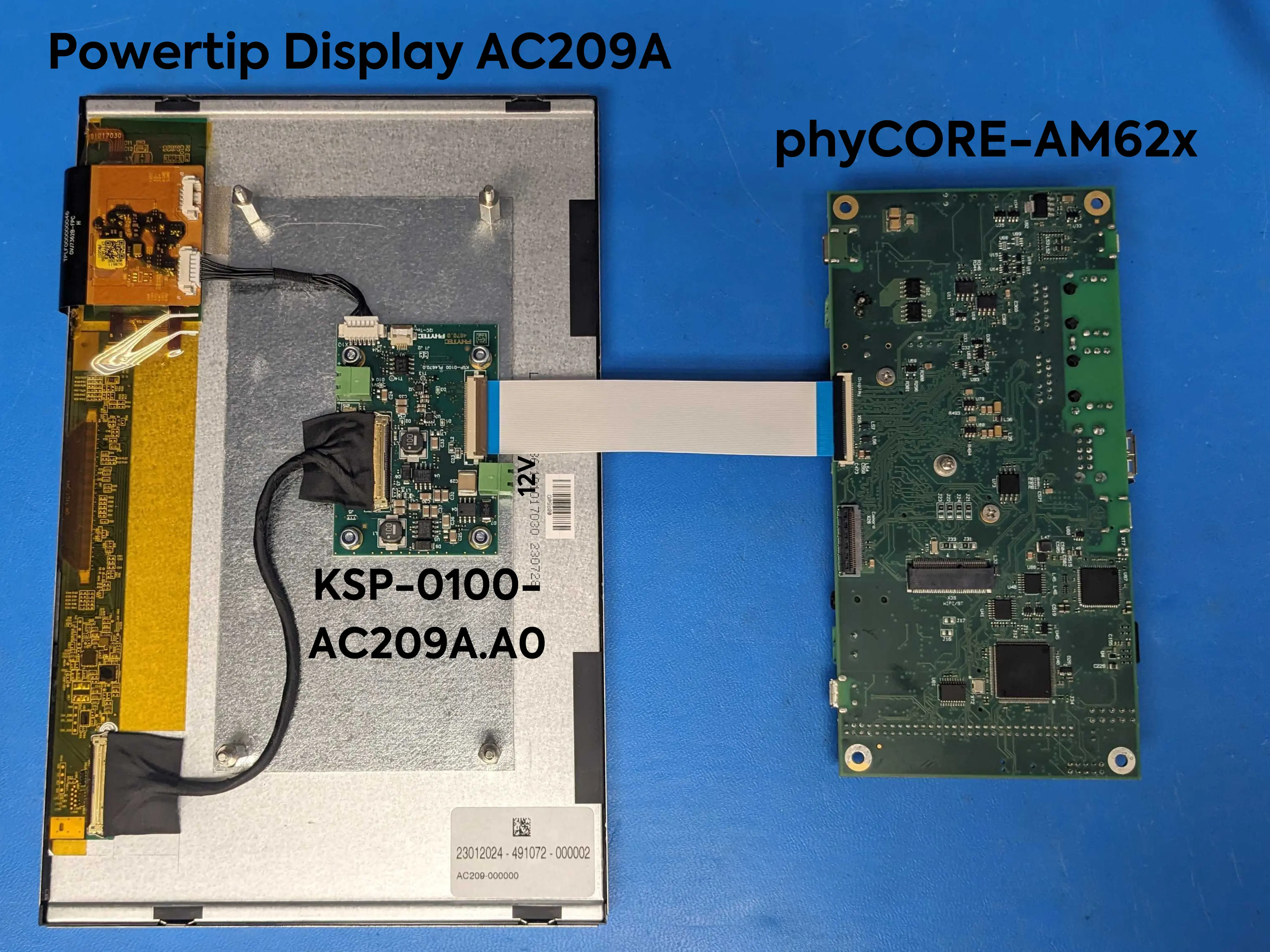Display (OLDI)
The phyCORE-AM62x SOM supports one 24-bit RGB parallel video output (VOUT) that can be used with Parallel MIPI DPI 2.0 (Digital Pixel Interface) or BT.656/BT.1120 interface. The phyCORE-AM62x SOM also brings out two OLDI display ports, each with up to four data lanes and one clock lane to support 21/28-bit serialized RGB pixel data and synchronization transmissions. The first port, OLDI0, consists of OLDI0_A0-3/CLK0 and corresponds to odd pixels, while the second port, OLDI1, consists of OLDI0_A4-7/CLK1 and corresponds to even pixels. This guide will show you how to show 3 different LCD touch displays connected to the OLDI0 interface of the phyCORE-AM62x. For more information on the OLDI interface, see section 8.2 in the Hardware Manual.

Requirements
The development kit supports 3 different 10” displays: Lincoln, Glyn and Powertip. The displays are custom solutions from each partner.
Lincoln 10” LVDS Display
KLCD-185-000: A PHYTEC Accessory Kit
Included in the kit:
Lincoln Technology Solutions, 10.1” PCAP LCD (LCD185-101CTL1AGNTTR1.2)
Display adapter PCB (PCB-L0136R1.2)
1x 8” 40-pin FFC/FPC cable (opposite-side terminals, 0.5mm pitch)
5V 1A USB-C power adapter
GLYN 10” LVDS Display
KLCD-AC200-000 (Contact Sales): A PHYTEC Accessory Kit
Included in the kit:
Glyn 10” touch display (G-ETML1010G3DRA*K0)
PHYTEC adapter board DH-029
1x 8” 40-pin FFC/FPC cable (same-side terminals, 0.5mm pitch)
12V Phoenix 2-pin power adapter
Powertip 10.1” LVDS Display
KLCD-AC209-000 (Contact Sales): A PHYTEC Accessory Kit
Included in the kit:
Powertip 10.1” touch display (PH128800T-006-ZHC01)
PHYTEC adapter board KSP-0100-AC209A0
1x 8” 40-pin FFC/FPC cable (same-side terminals, 0.5mm pitch)
12V Phoenix 2-pin power adapter
Note
Be sure that you are not using a headless BSP image as this does not support the display interface.
Connecting the Display
Power off the development kit and disconnect the power supply.
Connect the display to the development kit’s X55 connector via the 40pin FFC ribbon cable.
Open the X55 connector by pulling the black tab backwards toward the center of the carrier board.
Insert the ribbon cable into the connector, with the blue tape facing outward.
Once the ribbon cable has been seated into the connector, pull the black tab back towards it’s closed position. You should hear a small click when the connector has completely closed.



Connect the external power supply to the display adapter.
Loading the Display
Power on the development kit and hit any key to stop in U-Boot.
Load the device tree overlay needed for operating the display.
#For the Lincoln LCD185 display
sh-uboot=> setenv overlays k3-am62-phyboard-lyra-oldi-lcd185.dtbo
# For the Glyn AC200 display
sh-uboot=> setenv overlays k3-am62-phyboard-lyra-oldi-ac200.dtbo
# For the Powertip AC209A display
sh-uboot=> setenv overlays k3-am62-phyboard-lyra-oldi-ac209a.dtbo
Glyn AC200 and Powertip AC209 displays only. These displays are single lane LVDS, the optargs variable needs to be turned OFF fw_devlink for these displays to function.
sh-uboot=> setenv optargs fw_devlink=off
Boot into Linux
sh-uboot=> saveenv
sh-uboot=> boot
Note
For more information about overlays see chapter Configuring the Bootloader.
While the kit is booting, the PHYTEC logo with a loading bar should appear followed by a green and blue qt6demo app screen.
Note
The qtdemo can be interacted with on the LCD by plugging a keyboard or mouse usb hub into the development kit.
The demo can be stopped by running the following command:
sh-phyboard-lyra-am62xx-3:~# systemctl stop qtphy